Black Sesame Tang Yuan (Sweet Glutinous Rice Balls)
A pillowy dessert for the Lantern Festival, or anytime
The start of this year has been filled with traditional Chinese festive foods—both in this newsletter and in my stomach (no regrets at all!). From homemade wind-cured sausage to braised giant shrimp, it has been a feast. So, with a slight sense of relief that the two-week celebration is winding down, we’re concluding with something sweet for the Lantern Festival. (I’ve also made traditional Hawthorn berry Tanghulu last week, another nostalgic sweet eat! )
The lantern festival, Yuanxiaojie (元宵节), celebrated on the fifteenth day of the lunar new year, traditionally marks the final day of the New Year celebrations. Although the official holiday has already ended, families and communities in China and the Chinese-speaking diaspora gather to enjoy sticky rice dumplings, known as tang yuan (汤圆) or yuan xiao (元宵) (named after the festival itself). Glutinous rice has long been a staple in Chinese festive cuisine, and tang yuan is particularly symbolic—the name and round shape represent family unity. These chewy rice dumplings are typically filled with sesame, peanut, red bean, or jujube paste and served in a sweet soup or deep-fried. Some versions are unfilled or even savory, with meat.
The traditions of making tang yuan varies by region. In the North, they are sometimes made by rolling a wet filling directly in dry rice flour, while in the South, the dough is wrapped around the filling like dumplings. In Sichuan, the most common version has a black sesame filling and is served in a clear broth or with sweet fermented rice. This variation is now trademarked for a street food brand as Lai Tangyuan (赖汤圆).
Tang yuan was largely mass-produced by the time I was growing up. But as always, I turned to my parents for stories. In the 70s, my mom spent her childhood in a courtyard-style, one-story house (a humble version of a siheyuan), where multiple families shared communal spaces, including a large stone mill in the yard. Every household would be busy preparing for the New Year in lunar December, making everything from tang yuan to sweet fermented rice (laozao 醪糟). Grinding soaked sticky rice into flour was a collective effort. The kids would line up for their turn at the mill, while the rest of the family helped process the rice slurry, draining and drying it into flour for the dough. Fermenting sweet rice was another tradition (they only made it during the new year or for pregnant women)—without heating, the jar would be wrapped in a thick quilt and kept in a warm corner of the house. During the New Year, when visiting friends and relatives, serving a steaming bowl of homemade tang yuan was a gesture of hospitality. The texture of the rice balls—the chewiness of the dough and the melty, fragrant filling—was a test of the host’s skill and effort.
With ready-made glutinous rice flour and a few tricks and shortcuts, making tang yuan is way easier nowadays. Plus, they freeze well, so you can enjoy this sweet treat anytime—including valentines day, maybe.
Recipe for Black Sesame Tang Yuan
Makes about 14 medium-sized tang yuan (serves 4-5 as a snack)
Ingredients
For the filling
4 tbsp (40 g) black sesame seeds
2 tbsp (15 g) peanuts or walnuts
3½ tbsp (40 g) white sugar (granulated)
2 tbsp (30 g) room-temperature softened unsalted butter or pork lard.
1 tbsp room-temperature water
For the dough
120 g (~1 cup) glutinous rice flour
95 g (~0.4 cup) boiled water
Extra glutinous rice flour for dusting
Instructions
Prepare the filling
Toast the black sesame seeds and nuts in a dry pan over medium heat, stirring occasionally, for 5-6 minutes until fragrant. Let cool.
Grind the toasted seeds and sugar into a coarse powder using a food processor. Transfer to a bowl and mix with softened butter or lard, 1 tbsp water until combined. Freeze the mixture for 30 minutes until firm but pliable.
Scoop out teaspoon-sized portions (about 9 g / 0.3 oz each) and roll into small balls. Add to a tray or plate, freeze for another 30 minutes until completely solid.
Make the dough
Place the glutinous rice flour in a large bowl. Gradually add hot, just boiled water (starting with less) while stirring with chopsticks until the mixture forms small dough clumps.
Once the dough cools a bit, knead into a soft, elastic dough. It may feel dry at first, but as you knead, it will smooth out. Adjust with a little extra flour or water if needed. Cover the dough with a plastic wrap and let rest for 10 minutes, then divide it into small balls weighs 15 g (0.5 oz) portions. Keep the dough wrapped to keep the moisture.
Assemble and Cook the tang yuan
Roll each dough portion into a ball. Flatten it into a small disc and place a sesame-filling ball in the center. Carefully wrap the dough around the filling and seal it completely. Roll gently into a smooth ball (see the video below).
Bring a large pot of water to a boil. Gently add the tang yuan in batches. Stir lightly to prevent sticking. Simmer for 5-6 minutes until they float to the surface. Add a splash of cold water at the end to firm up the texture. Remove with a slotted spoon and serve in the cooking water or a sweet soup of your choice. Freeze the rest on a tray until firm and freeze in an airtight bag, these last months!
Shortcut Mini Tang Yuan (Without Filling)
Once the dough is ready, divide it into four equal pieces. Roll each piece into a thin log and cut into small sections. Roll into tiny balls (~1-1.5 cm / 0.5 inch in diameter, slightly larger than a pea). Boil for about 3-4 minutes until floating, and serve in a sweet soup. You can also use these in the mango sago dessert or ice jelly dessert.
Sweet Soup Pairings
Fermented Rice & Osmanthus (桂花酒酿)
Add boiling water (or the tang yuan cooking water) with 1 tbsp of sweet fermented rice (store-bought or homemade) to each bowl of cooked tang yuan. Sprinkle with dried osmanthus flowers or drizzle with osmanthus syrup or store-bought jam. This is a common pairing in Sichuan, sometimes with a poached egg to add extra nutrition. And this also used for mini tang yuan. Of course you can also use other edible dried flowers like rose.
Ginger-Brown Sugar Soup (红糖姜汤)
In a small pot, combine 2 tbsp of dark brown sugar, 3 thick slices of ginger, and 2 cups of water. Simmer until the sugar dissolves, then pour over the tang yuan. This is a popular Cantonese-style pairing.
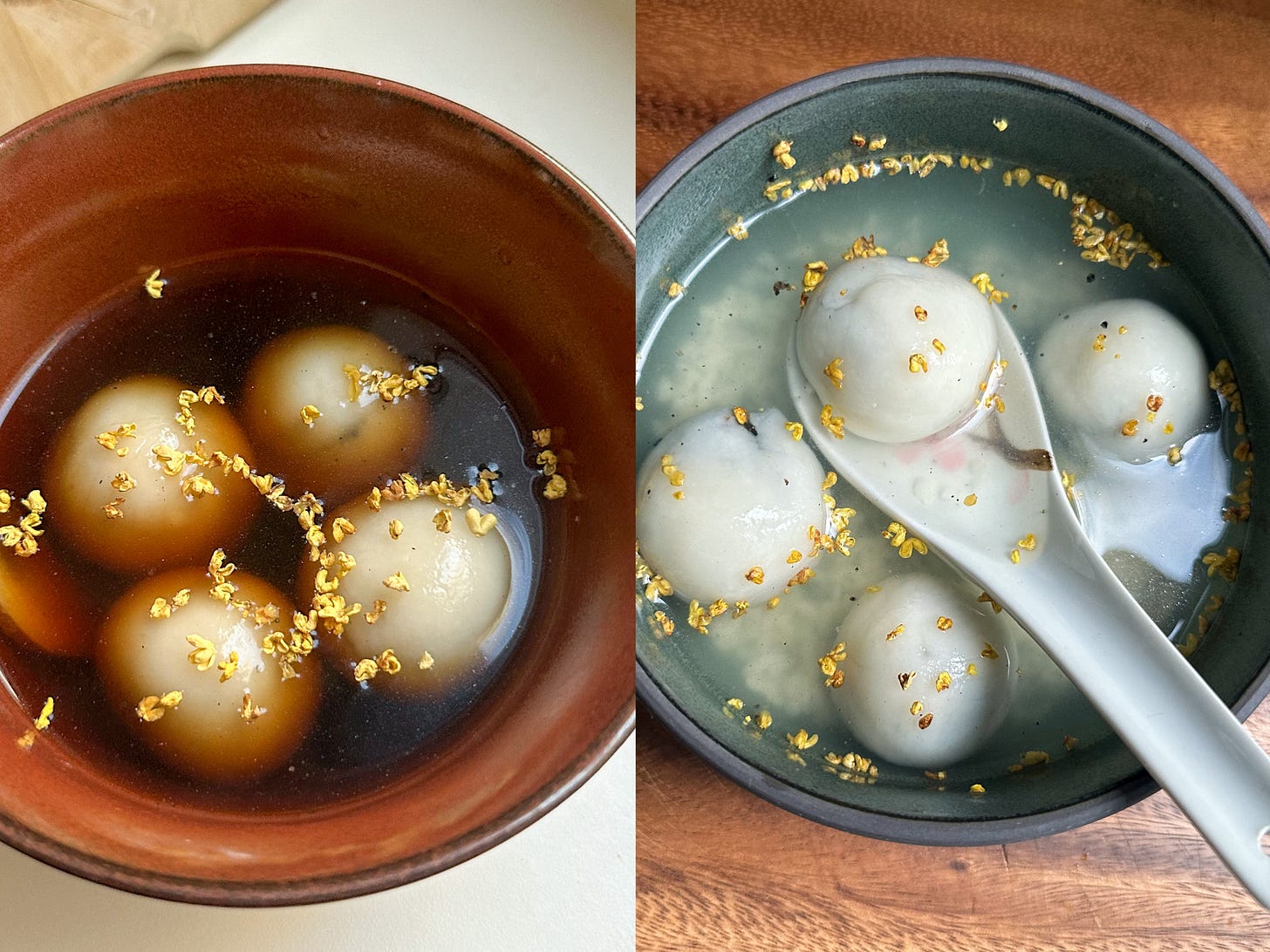
Tips for Making Tang Yuan at Home
Choose the Right Flour
Nowadays people rarely make glutinous flour from scratch like in my mom’s childhood. In China, you can get the dried flour from the supermarket, or if you want something more traditional, a specialty shop at the farmer’s market, known as 汤圆粉子. In Chengdu, I stumbled upon a shop outside Yulin market that still makes both homemade fermented rice and dried tang yuan dough (which comes in block and has a higher water content than the store-bought ones).
You need glutinous rice flour (糯米粉, nuo mifen) to make the dough, don’t confuse it with normal rice flour (粘米粉, nian mifen). The former is usually labeled in green packaging in Asian grocery stores. I normally pick up with wet-milled (水磨) is traditional and is best for this recipe. For example this or this product.
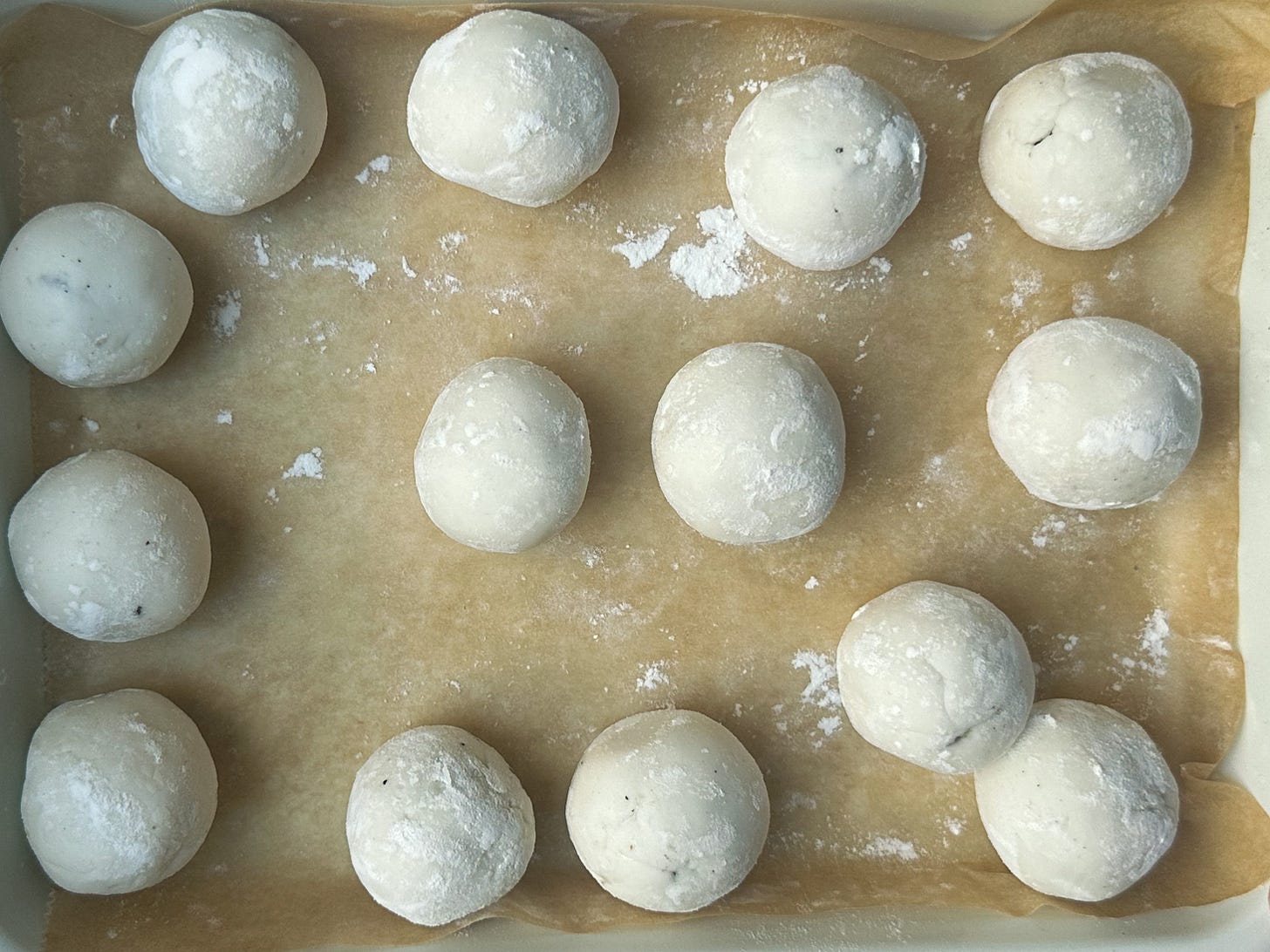
Make the Dough
There are two common ways to make the dough. One is the hot-water dough method (热烫法), which I used here—adding hot water to make the dough more pliable1. The second is the starch-cooking method (煮芡法), where you mix the flour with room-temperature water, pinch off a small piece, cook it, and knead it back into the dough2. I tested both and found the first method more straightforward.
Some recipes use a half-hot, half-room-temperature water method, but I opted for fully hot water at over 90ºC/195ºF, adding it slowly. I used about 80% water to the weight of the flour, though this varies by brand, so it's best to start with around 60% and adjust as needed. Once the mixture has slightly cooled but is still warm, begin kneading—the dough should be soft and easy to work with. If it looks dry at first, don't rush to add more water; after some kneading, it will come together. The most common mistake is adding too much water and making the dough too sticky. The ideal texture should be elastic, not chalky.
For the filling
Black sesame is the most traditional filling in Sichuan, but following my mom’s suggestion, I added peanuts or walnuts for a more complex flavor. You can also experiment with other nuts like hazelnuts or cashews, or adjust the ratio to make it more peanut-centric.
Traditionally, pork lard is used to bind the ground sesame and sugar, but many modern recipes opt for butter for accessibility. For a vegan alternative, coconut oil works well. I tested both butter and pork lard—lard melts better after cooking, creating a smoother filling, but some may find its flavor too pronounced in sweet dishes.
Shortcut Fillings: Thick Nut Butter & Ready-Made Paste!
If you don’t want to make the filling from scratch, ready-made black sesame paste, peanut butter, or red bean paste are great shortcuts. Just make sure the filling is thick and solid, not too runny.
To use, simply freeze the paste until firm, then scoop and roll it into small balls. For extra texture, you can optionally roll them in sugar. I’ve tested this with chunky peanut butter and store-bought red bean paste, and both work well!
Another sticky rice dessert for your craving:
The science behind this is that glutinous rice flour consists mostly of amylopectin starch, and hot water helps with gelatinization, making the dough more elastic.
From the book Traditional Rice Product Processing Techniques (《传统米制品加工技术》于新,刘丽)




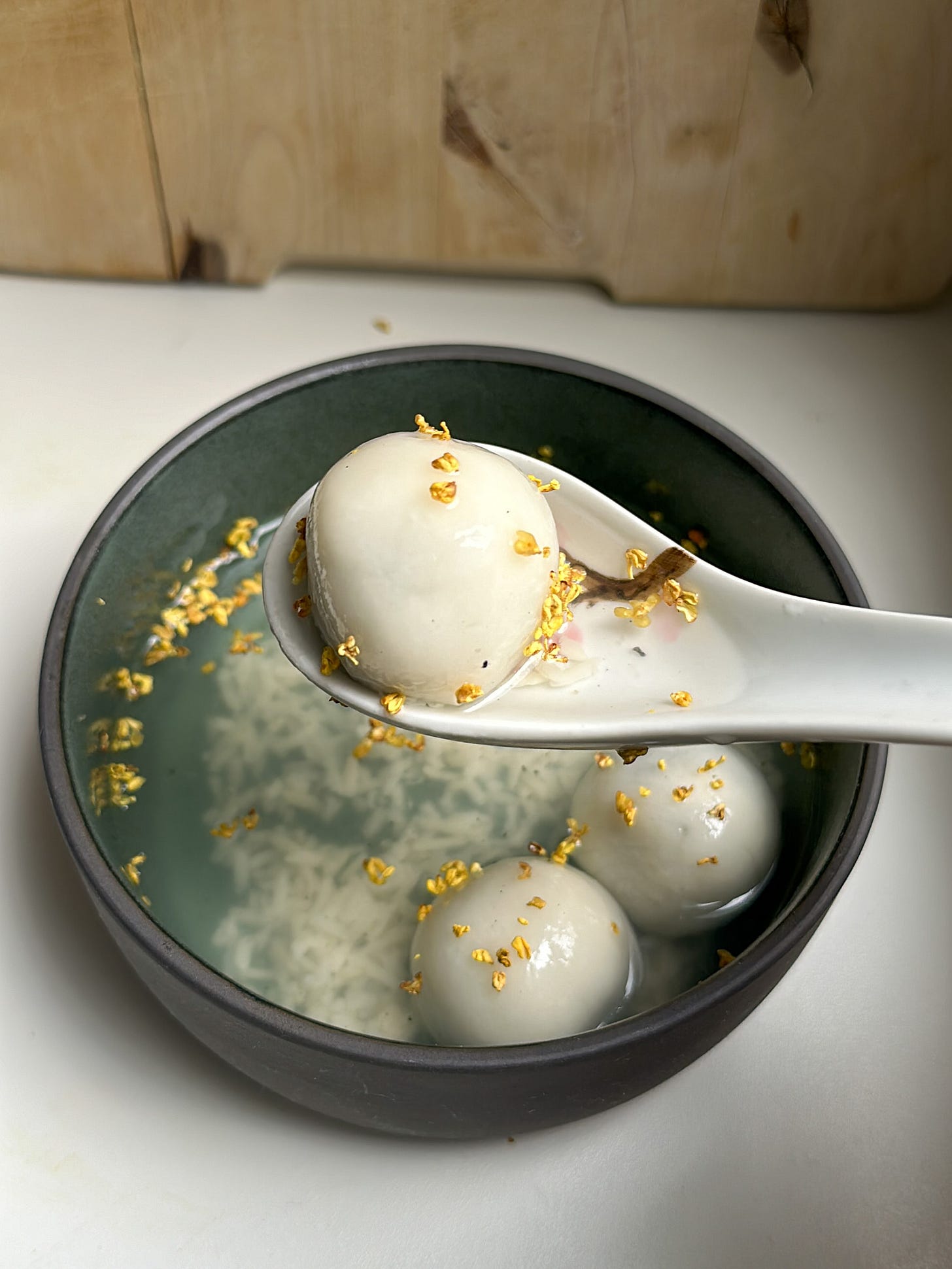
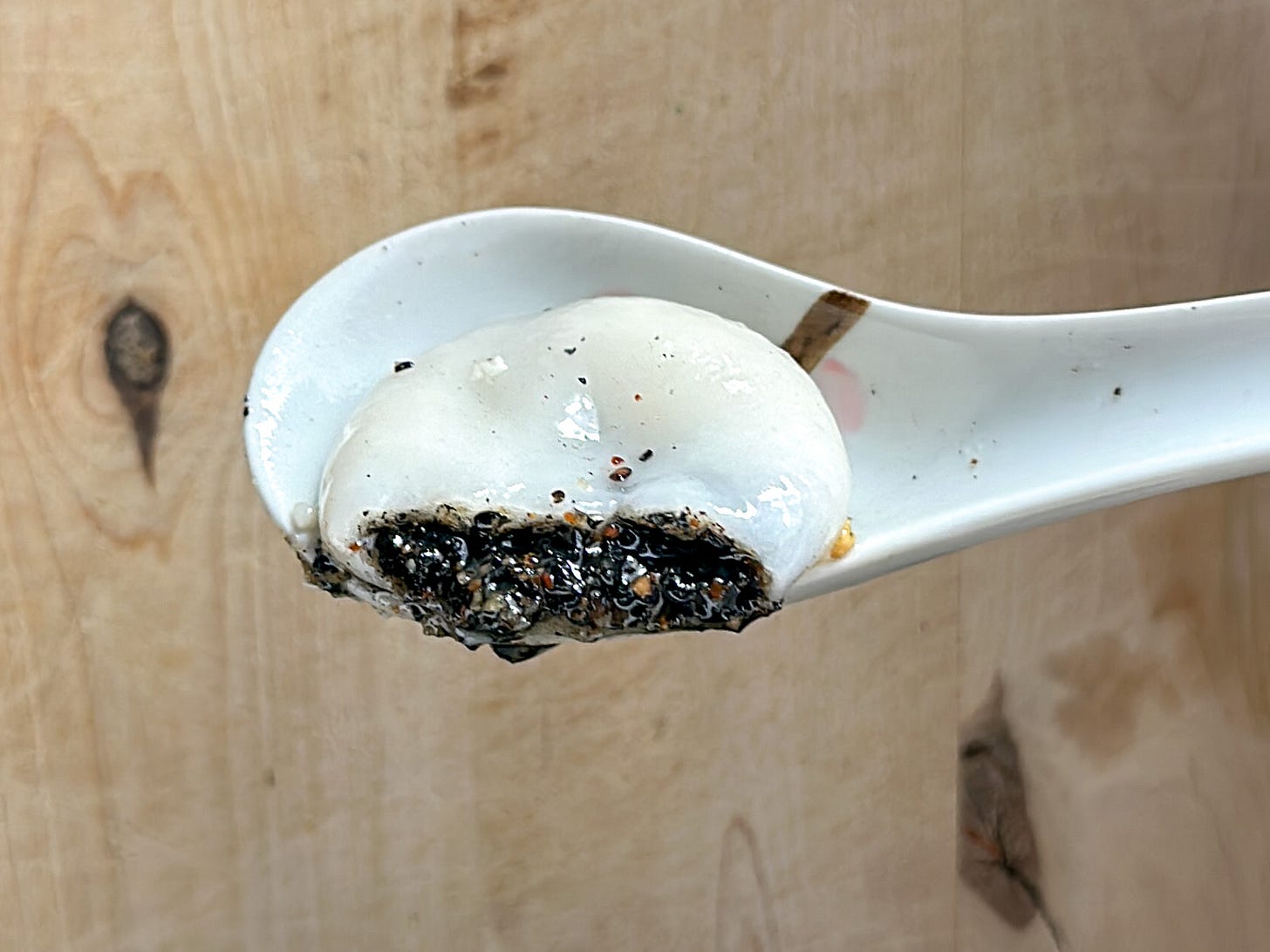
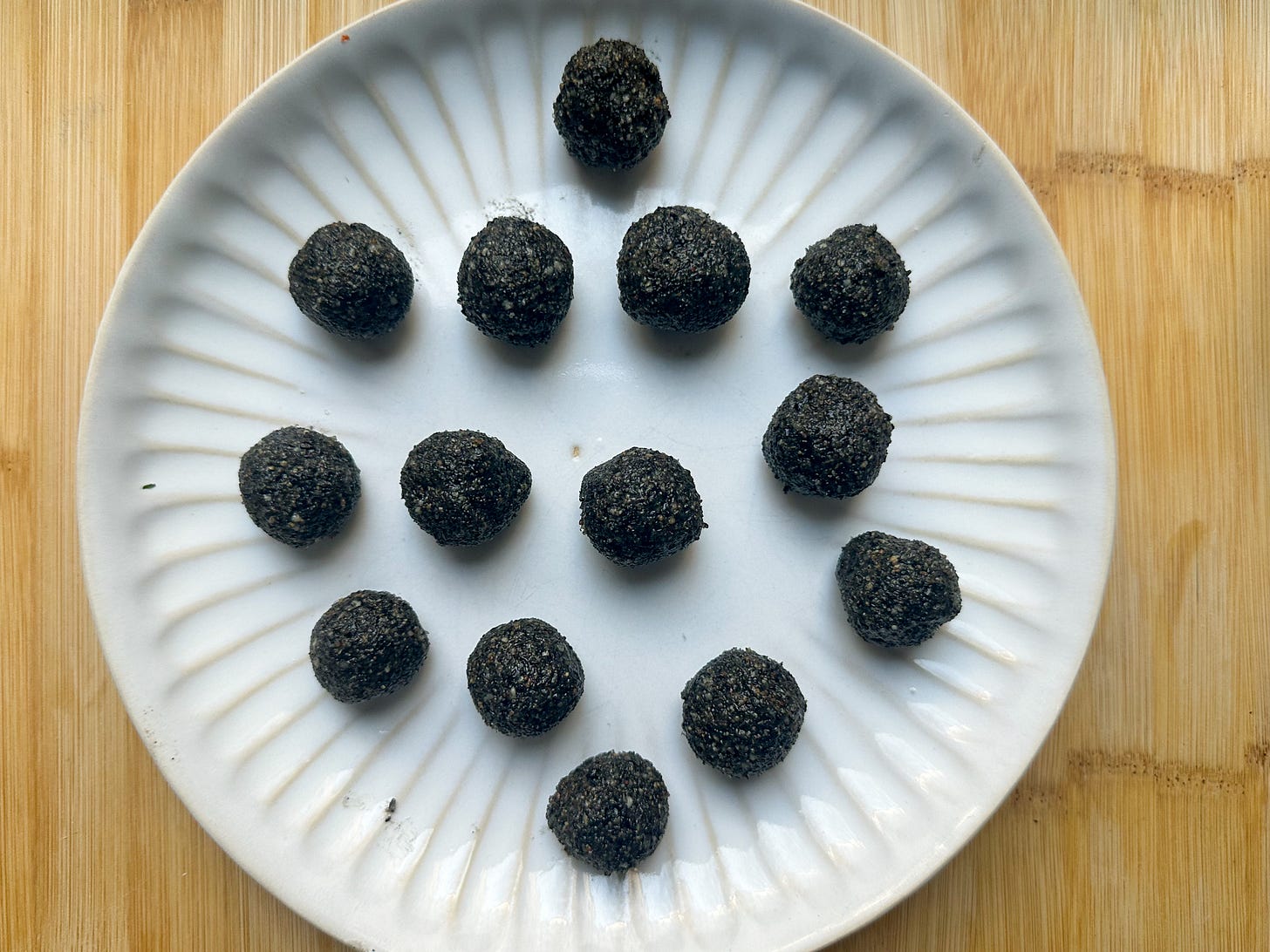

Black sesame tang yuan are my favorite! Yours look delicious.
The black sesame filling in tang yuan is one of my favorite things ever. I love the different sweet soup pairings you share too, I've never tried those. My boyfriend and I typically buy it pre-made, but may now have to venture making it from scratch!